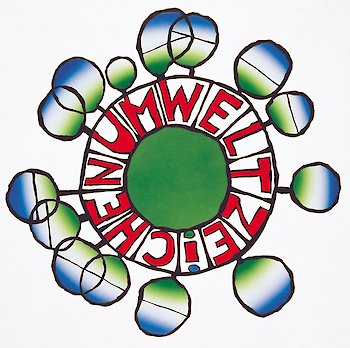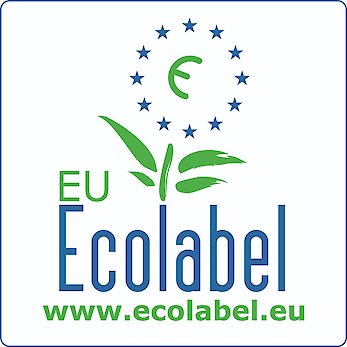Take a deep breath
Indoor air is an important factor in our well-being and health, as we spend up to ninety percent of our time inside buildings.
What should we pay attention to for healthy indoor air?
In a nutshell, it is important to use products that are as low in pollutants as possible in construction, interior design and household chemicals - and not to smoke. As the outer shell of buildings is increasingly insulated for climate protection reasons and thus becomes less permeable to air, pollutants accumulate more in the air. The most common indoor pollutants are so-called VOCs, softeners, flame retardants, active ingredients of pesticides and insecticides, preservatives, fragrances, formaldehyde and mold spores.
VOCs
Volatile organic compounds, or "VOCs" for "volatile organic compounds," are gas- and vapor-forming chemicals based on carbon. Examples include alcohols, acids such as acetic acid or ammonia, and many solvents. Indoor sources of VOCs are products and materials used in construction and interior design (for example, flooring, wall and ceiling materials, paints, varnishes, adhesives, furniture and decorative materials). Also significant are maintenance, cleaning and craft products, such as adhesives and paints, air "improvers" such as incense sticks, also tobacco smoking, even cooking, as well as human metabolism. Typical VOCs are also terpenes. They are emitted into the air by wood, for example, and can cause problems in some cases, e.g. for allergy sufferers.
Odor nuisance, irritation of the skin, mucous membranes and lungs, and other symptoms whose cause is unclear can indicate excessive VOC exposure. Concentrations that cause adverse health effects can occur immediately after construction and extensive renovation work, as well as in the case of improper processing and massive use of less suitable products.
Pollutants in house dust
Harmful chemicals can also be absorbed via house dust. Children are at greater risk here, as they often play sitting or lying on the floor. House dust is a mixture of a wide variety of substances and consists largely of soot, plastic particles, abrasive material, skin flakes, bacteria and mold components, as well as ingredients from consumer products. Pollutants are attached to these dust particles, which can be found in the ambient air or detached from the surrounding materials of furniture and other objects. Flame retardants, plasticizers, heavy metals or active ingredients of insecticides and pesticides are frequently present.
Pollution of indoor air and house dust with harmful substances is a significant problem, as dust particles can easily enter our bodies by swallowing or inhalation. If indoor substances of concern are suspected, a house dust test can provide clarity. In Austria, for example, house dust is examined by IBO Innenraumanalytik and the Federal Environment Agency.
Allergies due to chemicals
Most common are allergic reactions to fragrances or preservatives, with which we can also come into contact via indoor air or house dust.
Up to three percent of adults are affected by fragrance allergies. They usually develop over time, often after years of contact with the respective fragrance. Fragrance allergies are also becoming more common in children. The EU's Cosmetics Legislation Advisory Panel has identified over eighty individual chemicals that are allergenic. Therefore, it is important to avoid fragrances whenever possible. Fragrancing rooms, even with natural essential oils, should be avoided, especially by allergy sufferers, but also in general, and cosmetics, cleaning products and the like should be used. Products with as low a proportion of fragrances as possible should be used.
In the case of preservatives, the most common allergy triggers at present are the chemical group of isothiazolinones. They can be found in a wide range of products, such as cleaning agents, but also paints and varnishes. Legislators have recently reacted to this problem and only allow very low concentrations in cosmetics, and there are also stricter rules for the labeling of wall paints, cleaning agents and similar chemical mixtures. It is therefore to be expected that isothiazolinones will no longer be used so frequently.
Formaldehyde
This chemical is irritating to mucous membranes even at low concentrations, causes allergies and was classified as carcinogenic in June 2014. Many wood-based products contain formaldehyde as a component of the glue. The concentrations that are allowed to outgas from the finished product have been severely restricted in recent decades. Other sources in the interior are contaminated materials, such as insulation materials that are no longer used today (urea formaldehyde local foams).Tobacco smoke contains formaldehyde in comparatively large quantities, and even burning candles can be a source of formaldehyde in the indoor air. Formaldehyde or, in particular, so-called formaldehyde releasers can also occur as preservatives in paints and varnishes or household cleaners. In relatively new buildings, formaldehyde exposure from building materials is hardly in the problematic range; elevated concentrations can still occur in older buildings or with a large amount of older furniture.
Mold
Mold is one of the most important indoor problems. Molds can cause damage to materials, and the spores are also allergenic, making them one of the contaminants of biological origin.
The most common health effects on humans are mucous membrane and conjunctivitis, rhinitis and allergic asthma.
Mold growth always involves (overly) humid air. The cause of mold growth can be incorrect ventilation behavior, high moisture loads due to laundry drying or insufficient heating of rooms, or even construction errors. Mold most frequently occurs at thermal bridges, i.e. at places where the cold outside temperature can penetrate to the interior walls. Moisture in the air condenses on these, creating ideal conditions for mold cultures.
Pollutants can also enter the indoor air from outside - such as fine dust or radioactive radon in areas where it is contained in rock. Here, residents of buildings with poor sealing to the ground can be particularly affected.
Breathe well and deeply with Austrian- and EU Ecolabel products
Products that have been awarded the Austrian Ecolabel meet strict regulations regarding problematic chemicals. All products must have an expert opinion according to standardized test procedures. For example, in the case of building products, test chamber measurements can be used to check whether and which chemicals are released into the indoor air. In this process, a component or piece of furniture is placed in a measuring chamber for 28 days - temperature, air pressure, humidity and air exchange are specified. Vapor and gaseous emissions are measured. Strict limits apply for certification with the Ecolabel.


The Austrian Ecolabel and the EU Ecolabel.
In the case of varnishes, wall paints and cleaning agents, too, special consideration is given to their impact on health. For example, strict requirements apply to allergenic preservatives or fragrances.
Further links
For more detailed information on various terms related to chemicals, we have compiled a chemical glossary.
BMNT (2018): Guide to healthy indoor air.
Brief information on pollutants on the website of IBO Innenraumanalytik
